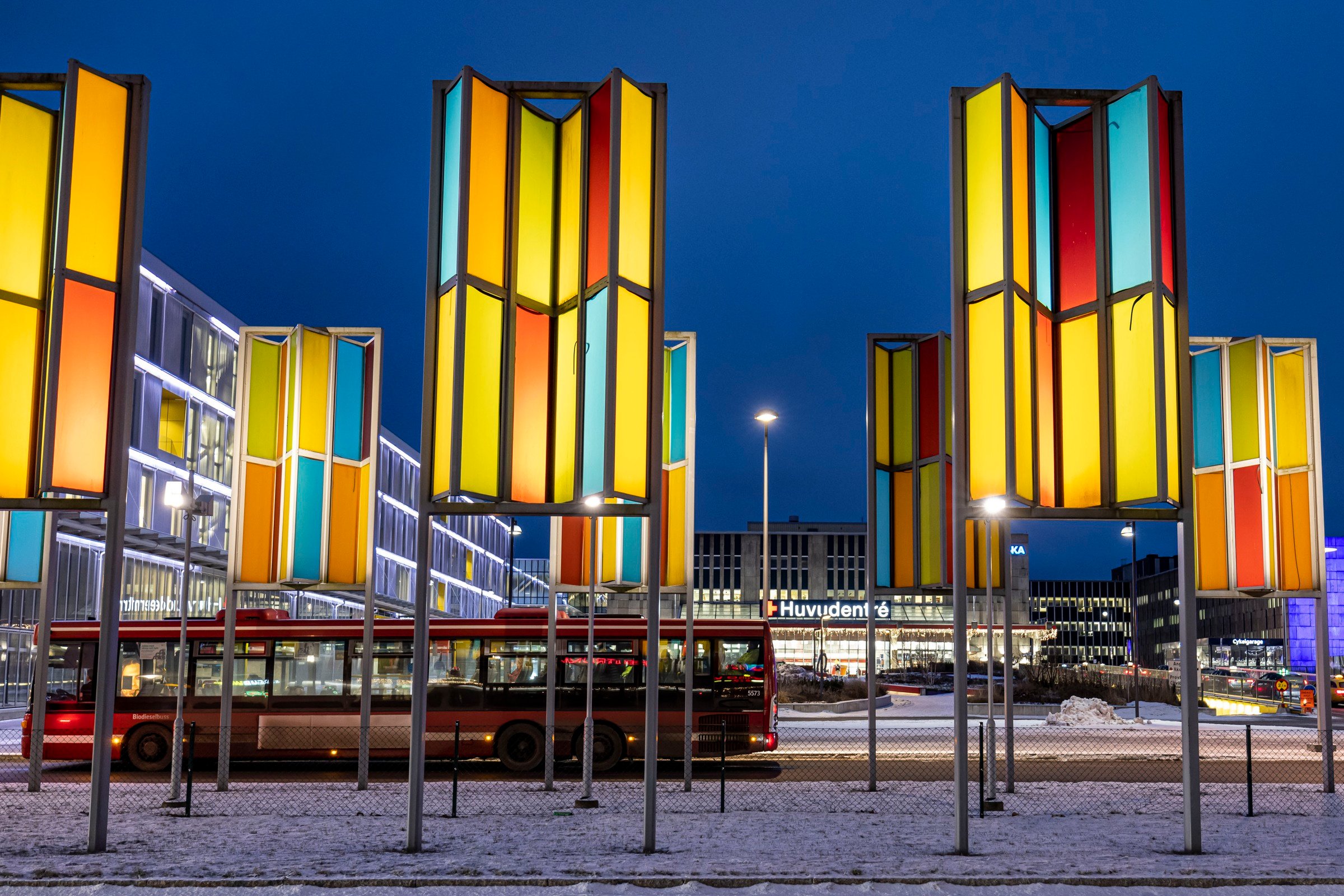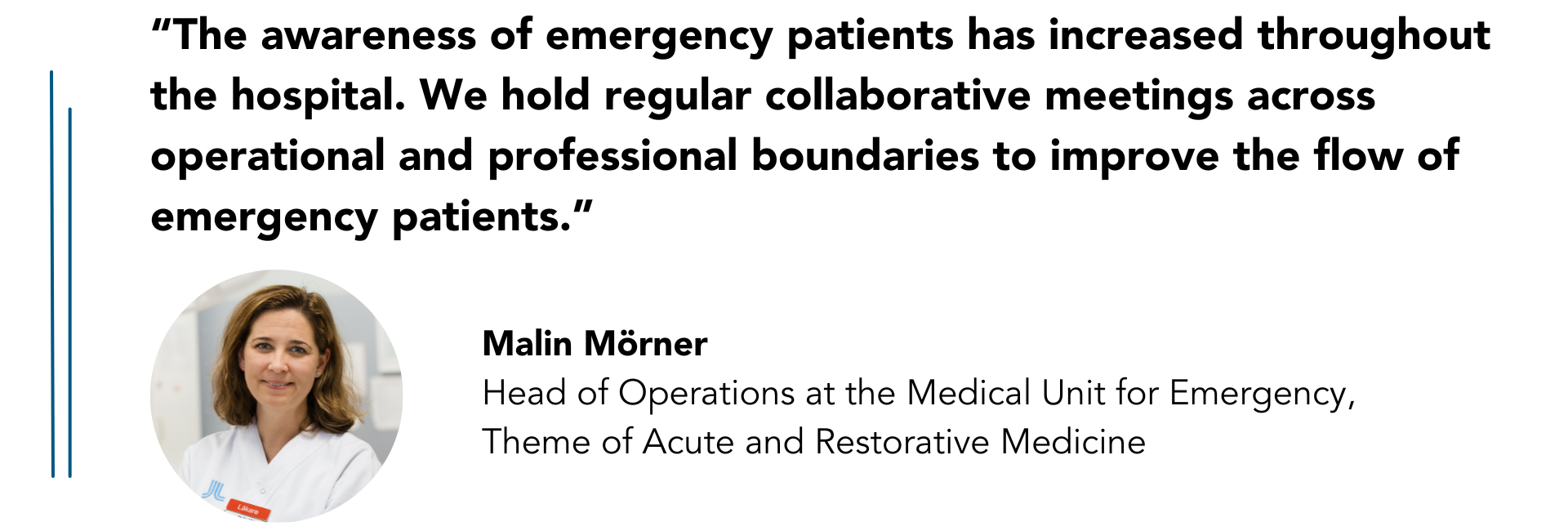Waiting times at the emergency room at Karolinska in Huddinge have decreased by half an hour

Since the beginning of 2022, waiting times at the Huddinge emergency department have steadily decreased. Patients now receive their first medical consultation about half an hour faster on average. Malin Mörner, Head of Operations at the Medical Unit for Emergency, Theme of Acute and Restorative Medicine, attributes this improvement to several factors. A key factor is that the issue of emergency department wait times has garnered attention across the entire Karolinska University Hospital.

Other significant factors include local changes in the emergency department's workflow. This involves improvements in scheduling and team collaboration. Now, medical and nursing managers share an office, facilitating the resolution of daily challenges.
Furthermore, since June, more specialists have been available around the clock. This change has enabled the continuous presence of a lead doctor and nurse throughout the day.
"After many restructurings, testing various working methods, and redistributing staff on the floor, I also feel that the time to see a doctor has decreased. This is very positive," says Linuz Hultgren, a nurse working in the emergency department at Huddinge.
However, Hultgren notes that the emergency department experiences a significant influx of patients. This is particularly evident to those working in nursing care on certain days.
"At those times, it feels like we are not enough. It's a major challenge for the hospital," says Linuz Hultgren.
Another key element in reducing waiting times is the 'Crowding Tool'. This digital tool clarifies the measures to be implemented when the emergency department's load reaches various levels.
"The Crowding Tool helps the management team and departments to always be one step ahead and implement preventative measures," says Malin Mörner.
Measured by the median, the waiting time for a medical assessment was 102 minutes in the first quarter of 2022. By the fourth quarter of 2023, the waiting time had dropped to 72 minutes.
"It's wonderful to see this improvement. What a concerted effort! The hospital is embracing the issue in a completely different way than just a few years ago. This is yielding results for our patients. The fact that we dare to test, change, and constantly evaluate what we do is positive. It means that we can continue to improve lead times and thereby the quality of care for our patients," says Malin Mörner.